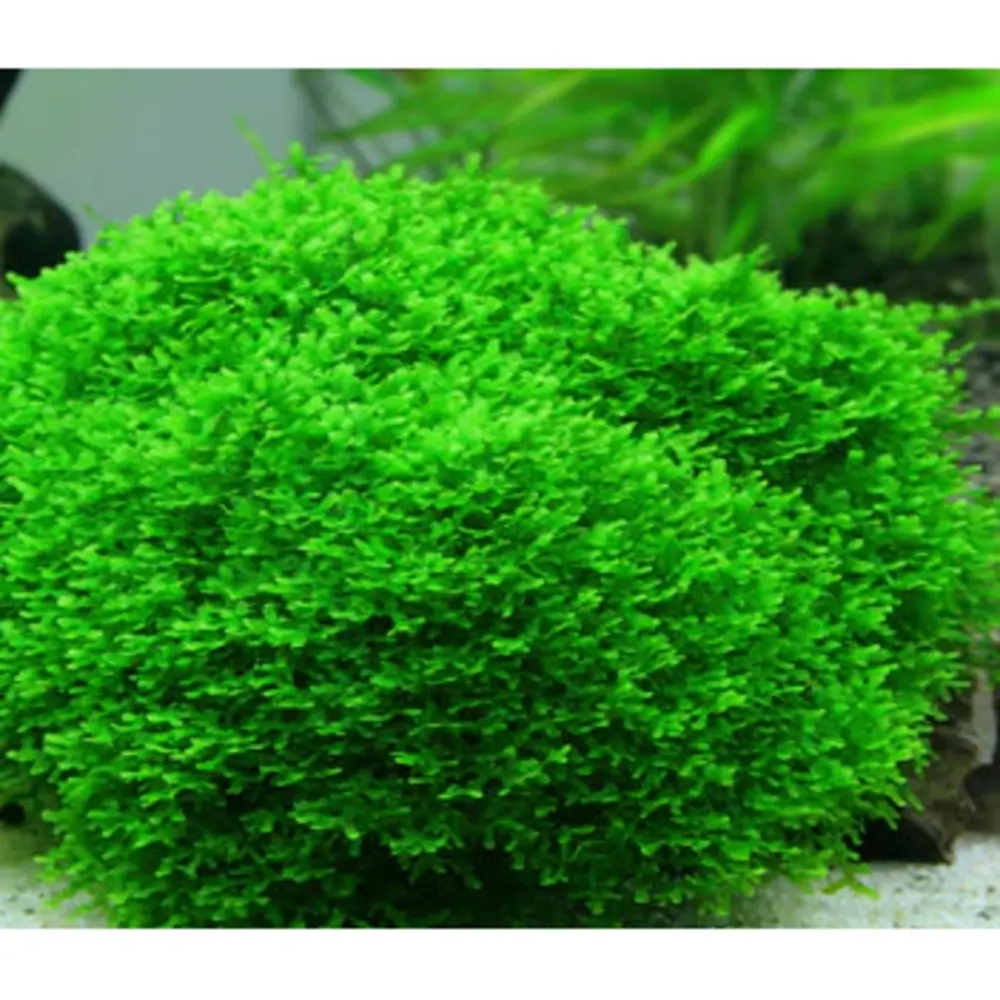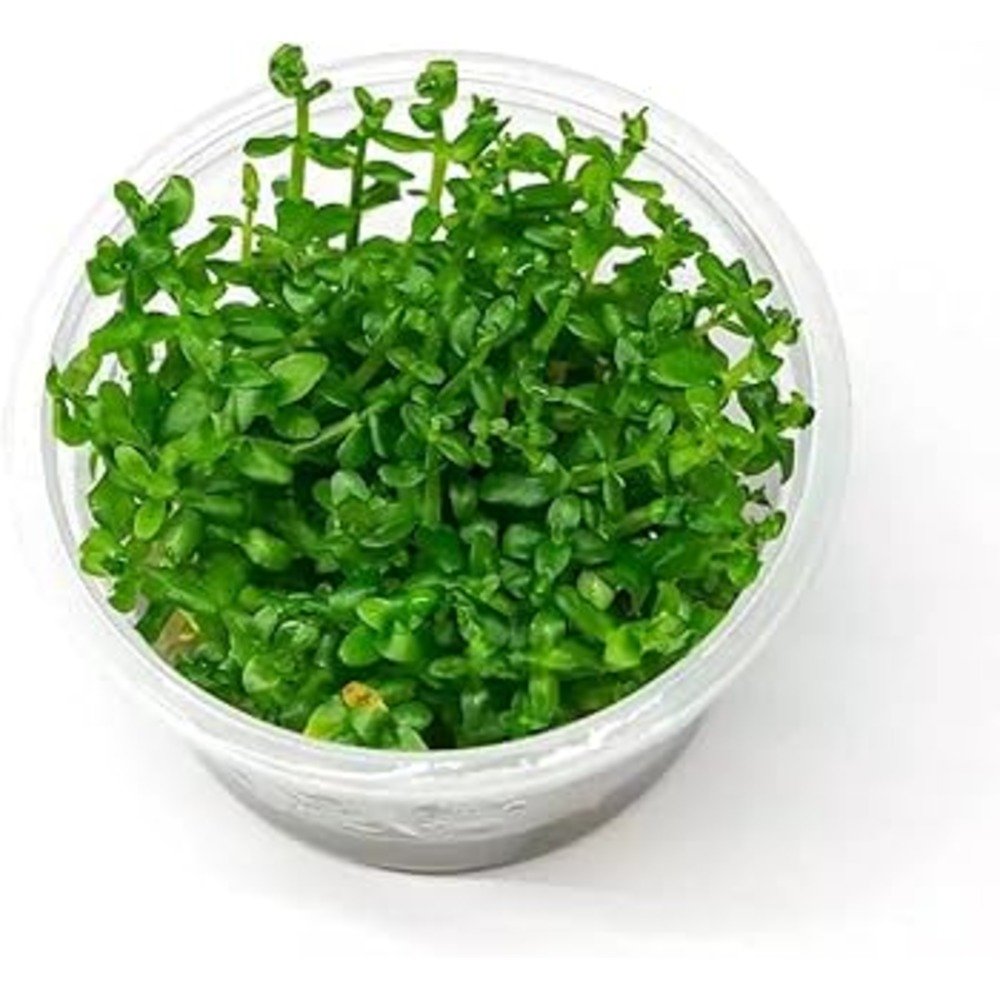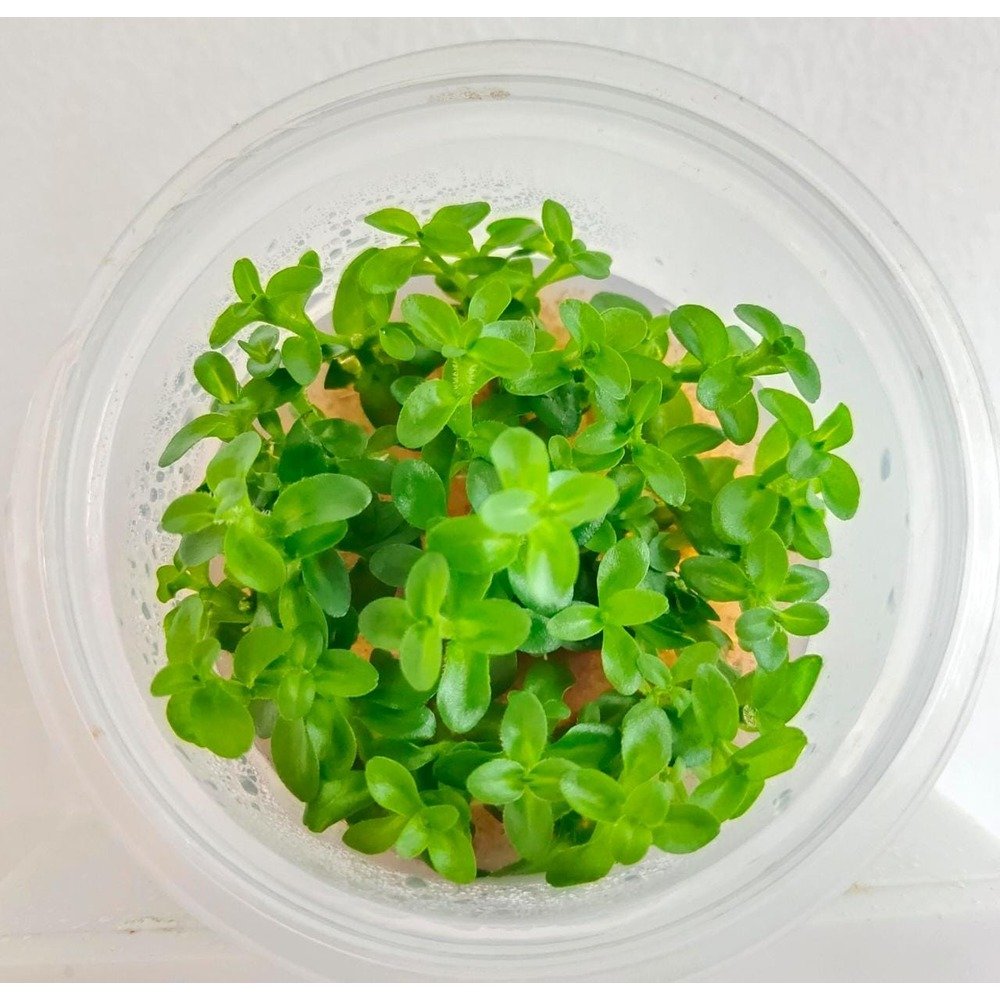-
Java Moss | Bunch
Original price was: ₹250.00.₹150.00Current price is: ₹150.00.In stock
Java moss is a moss belonging to the family Hypnaceae. Native to southeast Asia, it is commonly used in freshwater aquariums. It attaches to rocks, roots, and driftwood. The identity of this well-known plant is not resolved; formerly thought to be Vesicularia dubyana, it may actually be Taxiphyllum barbieri Z -
Pelia Moss | Bunch
Original price was: ₹300.00.₹150.00Current price is: ₹150.00.In stock
This moss can grow well in nearly any environment, it will typically grow in bush like shapes and produces leaves that look similar to a stags horns. -
Red root floater | Bunch
Original price was: ₹100.00.₹50.00Current price is: ₹50.00.In stock
Phyllanthus fluitans, also known as the red root floater, floating spurge, or apple duckweed is a species of free floating aquatic plant and herbaceous perennial in the family Phyllanthaceae. This species is one of the only three non-terrestrial species in the genus Phyllanthus, with the other species being P. -
Overview: Staurogyne repens resembles Hygrophila a lot. Being a green stemmed plant it endows an alluring look to the aquarium. It is perfect for nano aquariums. The creeping growth of the plant does not let it disturb the movements of the fish and let them wander freely. It is hardy and therefore requires less maintenance. The stems are green in color and provide a natural look to the ecosystem of the aquarium. It assists in increasing the level of oxygen in the water and reducing the nitrates. Thereby it helps to a great extent in balancing the quality of water. This is a perfect plant to set accents in crevices and fill the gaps in the hardscape. Appearance: Staurogyne Repens is a beautiful carpet plant. It stems laterally and provides a carpet like formation at the base of the aquarium. The leaves are bright green. The plant is compact comprising low and bushy stature. The stiff green, brownish stem makes the whole plant an alluring one to grow in the aquarium. The maximum height attained by the plant is 3 to 10 cm with the width of 5 to 10 cm. Leaves grow to the length of 4 to 4.5 cm with the width of 1 cm. The white flowers of the plant add to the beauty of the aquarium manifolds. Hard/soft plant: Hard plant Ideal water temperature: The plant thrives well in the temperature of 68-82° F. Lighting conditions: It requires strong light conditions to flourish well. Apart from this, adding CO2 is also needed to make the plant prosper. Under low light conditions, the sprouts start getting upright growth instead of creeping, and this hampers the carpet like the growth of the plant. Ideal pH Level: For perfect growth, the water must have the pH in between 6.0-8.0. Do you know: The plant propagates by cutting the shoots. It requires captive condition as well as proper care for thriving. Adding fertilizers speed up the growth making the plant perfect for the aquarium.
-
Anubias Nana Gold is a flowering plant that grows best when the rhizome is attached to hardscape material such as aquarium wood or aquascaping stone. Regular fertilization is favorable and low to medium lighting is sufficient as high lighting will promote the growth of algae on its leaves.
-
Java Moss | coconut cave
Original price was: ₹350.00.₹175.00Current price is: ₹175.00.In stock
Java moss is a moss belonging to the family Hypnaceae. Native to southeast Asia, it is commonly used in freshwater aquariums. It attaches to rocks, roots, and driftwood. The identity of this well-known plant is not resolved; formerly thought to be Vesicularia dubyana, it may actually be Taxiphyllum barbieri Z -
Bacopa caroliana (Common names: mint bacopa, lemon bacopa, blue water hyssop) Overview: Originating from the South-eastern United States of America, Bacopa caroliana is one of the most popular and readily available aquatic plants for aquariums. The undemanding nature of these plants and slow grow rate makes it a preferred choice among aquarium hobbyists. Bacopa caroliana grows well in bogs or partially submerged in it’s natural habitat. Its leaf arrangement can be customized and hence serves as a great option in aquascaping. Appearance: The stems of Bacopa caroliana grows about 10 to 50 cm long and 3 to 4 cm wide. The leaves are thick and succulent, and emit a citrus smell when crushed. The coloration ranges from greenish yellow to pinkish copper- brown depending on the intensity of light it is exposed to. In immersed state, it produces small purple flowers, but in aquariums, the flowers tend to decompose. Hard or Soft plant: Hard plant Ideal water temperature: Bacopa caroliana prefers water temperatures between 21 and 27 degree Celsius. Lighting: Bacopa caroliana grows well in ample lighting conditions, but manages to grow under moderate lighting too. Ideal pH conditions: Bacopa caroliana thrives in pH levels between 6.5 and 7.5 and water hardness between 71.43 and 142.86 ppm. Functions and advantages:
- Bioluminescence: Bacopa caroliana produces reddish light from chlorophyll when gold nanoparticles are introduced to it, causing the cell to promote photosynthesis. Taiwanese scientists are doing R&D on this natural phenomenon to find out how Bacopa caroliana can be used to reduce global warming and reduce energy costs substantially.
- The leaves of Bacopa caroliana have a characteristic lemony fragrance, are edible and used as a garnishing herb.
- The leaf infusion can be used for medicinal purposes to cure respiratory issues like chronic cough and breathing problems.
- Used for aqua-scapes in aquariums because of its beautiful coloration and bluish purple flowers.
-
ADA ZP813 Peacock moss
Original price was: ₹350.00.₹200.00Current price is: ₹200.00.In stock
Increasing the aesthetics of the tank, peacock moss adds color and provides plenty of hiding spots for the fish. At the same time, it keeps the conditions of the tank stable. The scientific name of peacock moss is taxiphyllum sp “peacock .”The specific peacock-shaped fronds give it a unique look, making it extraordinary. Such fronds gave this moss its specific name. It is an easy to care aquarium plant that can thrive well in diverse water conditions. Under the right water parameters, it shows faster growth. Water Parameters Cold water with temperatures ranging between 18.33 and 25 degrees Celsius will be the best for its survival. If the temperature is high, the plant may begin to wilt and ultimately die. Also, it loses color and peculiar peacock-shaped fronds. Peacock moss requires pH between 5.0 and 7.5 and can survive well in both hard and soft water. Under higher light intensity, the peacock moss thrives. Even though the plant can live in all lightning, the higher the aquarium light- the faster the growth will be. High light intensity favors compact growth of the moss where it attains beautiful triangular-shaped fronds. Additional carbon dioxide also perks up the growth of moss. Highly attractive and perfect for all types of aquariums, peacock moss has become one of the favored mosses among aquarists. Compact and dense growth makes the tank look very beautiful. It can be attached to the driftwood, aquarium décor, and rocks in the tank to give a striking background or mat like look to the tank. Do you know- Peacock moss looks similar to Christmas moss, but the fronds are less puffy and have a softer velvet-like texture. They are versatile and get easily attached to any hardscape in the tank. -
Shrimp Breeding/hiding Cave in Java moss
Original price was: ₹350.00.₹200.00Current price is: ₹200.00.In stock
Provides spawning, breeding, and hiding place for the shrimps. It offers a place for playing, resting, and entertainment, too, for aquatic creatures. The product is smooth, without any sharp edges. Made up of aquarium safe materials. Being a good hiding spot, it increases the rate of habitability -
Mint Charlie or Micromeria brownei is a true submersible aquatic plant that is light green in color and has rounded leaves. It is usually placed in the middle to rear of the aquarium and is stimulated by cuttings. Simply cut the top of the plant to prune to desired height and replant those cuttings.
-
Lilaeopsis brasiliensis Tissue Culture
Original price was: ₹250.00.₹150.00Current price is: ₹150.00.In stock
Overview: Lilaeopsis brasiliensis is a beautiful compact slow-growing plant that originates from South America and belongs to the family Apiaceae. When the right parameters are given, it gives a lawn effect to the tank that multiplies its beauty. It can grow up to 7 cm tall with high light intensity. You can grow Lilaeopsis brasiliensis simply as a foreground plant or place it everywhere to give a lawn look. Apart from aquariums, Lilaeopsis brasiliensis is also grown in garden ponds for increasing the aesthetics. Since it can tolerate low salt concentrations, you can go for it even for brackish aquariums. Mostly the aquarists use Lilaeopsis brasiliensis as it is a grass-like ground covering plant. It is easily adaptable to varied water conditions; therefore, it is easy to maintain and take care of. Advantages: There are multiple benefits of having a tissue cultured variant of Lilaeopsis brasiliensis as the risk of pest infestation becomes negligible. Many times plants bought from pet stores bring pests with them that can hamper the growth of other plants. It is the reason why choosing tissue cultured Lilaeopsis brasiliensis will ensure better results over normal Lilaeopsis brasiliensis plants. Once you buy the tissue cultured plant, make sure to maintain water parameters within the prescribed range for its best growth. Light and other requirements: Lilaeopsis brasiliensis is not a very high demanding aquarium plant. It requires medium light intensity and a medium level of carbon dioxide. Excess of both these may hamper the growth of the plant. Lilaeopsis brasiliensis grows not more than 5 cm under suitable conditions. It is the reason why aquarists find it suitable for nano tanks. You can also use it for foreground and as ground cover. The temperature tolerance of this plant ranges from 20 to 28 degrees Celsius. 2 - 14°dKH carbonate hardness and 0 - 30°dGH general hardness is considered perfect for the proper growth of Lilaeopsis brasiliensis. pH Requirements: The plant can thrive well under the pH requirements ranging between 5.5-7.0. How to Use: The plant type is stolon. You can use Lilaeopsis brasiliensis for creating a lawn look in the tank. Since it grows not more than 5 cm, make sure to place the plant a few centimetres apart from tall plants so that it can get enough light for its growth. Propagation can be done through runners, Splitting, cutting off daughter plants. Care: Remove the tissue culture gel from the plant before introducing it to the tank. Clean it thoroughly with water and remove the gel with a soft brush or your hands. The gel may bring slight changes in the water parameters. Therefore, make sure it is completely removed from the plant before burying in the substrate. -
Blue Capensis is also known as "Cape Water Lily". It produces beautiful rich blue flowers with yellow centers. Lily pads are dark green. The Capensis large, elegant blue flowers are held well above the water at the tip of a sturdy green stalk.
-
Yellow Lily plant
Original price was: ₹400.00.₹350.00Current price is: ₹350.00.Available on backorder
The Yellow water-lily is a common plant of still or slow-moving water and grows in ponds, lakes, canals and ditches. ... It flowers during the summer, from June to September, and smells like the dregs of wine, hence other common names like 'Brandy Bottle'. -
-
Rotala Blood red SG Tissue Culture
Original price was: ₹300.00.₹150.00Current price is: ₹150.00.In stock
Overview: Rotala rotundifolia' Blood red' belongs to the Lythraceae family and is native to Southeast China. True to its name, the intense red color of the leaves is what makes it extremely attractive among aquatic plants. Even though 'Rotala' means 'plant with round leaves,' this variety is an exception due to long and narrow leaf patterns. The plant is bushy and has 15 to 30 long stems that are 2 to 3 cm wide. Since it attains a bushy structure, regular pruning is necessary to allow light to reach the lower leaves. Unlike most other Rotala species, 'blood red' is undemanding. All it requires is high light conditions to bring flashy red color to its leaves. It is a fast-growing aquatic plant, suitable as a mid-ground or background plant. It brings stunning contrast with other green species in the tank and performs well under good water conditions. Rotala rotundifolia' Blood red' can be propagated through head cuttings or side shoots. Advantages: Tissue culture aquarium plants are superior in quality compared to normal plants as they are developed in-vitro conditions. They are devoid of pests and infestations that can harm an already-established tank. Adding the tissue cultures version of Rotala rotundifolia' Blood red' is safe and risk-free. Care: Rotala rotundifolia' Blood red' is a stem plant with a medium to fast growth rate. It attains good height (15 to 30 cm) under proper water conditions. The ideal temperature for 'blood red' is 22 to 28 degree Celsius. Additional carbon dioxide and macro and micronutrients through water will help it flourish faster. Light requirements: To develop bright red colors, this species of Rotala requires strong light conditions. Even though it can develop well in moderate lightning as well, only strong light will help it develop flashy red color. pH requirement: 6 to 7.5 is the perfect pH range for its survival. Other requirements: Rotala rotundifolia' Blood red' grows vertically and attains bushy growth; therefore, to keep it compact, regular trimming is essential. You can use the trimmed sections of the plant for propagation. -
Peach Lily Plant
Original price was: ₹400.00.₹350.00Current price is: ₹350.00.Available on backorder
Water lilies are a group of plants containing about 70 known species. They are either tropical or hardy and grow in water 3 inches to 2 foot deep. The spread is variable from 2 foot to about 20 foot. Larger plants need larger water gardens or ponds. Short ones do well growing in containers. They prefer non-moving water without fountains or currents. Most prefer full sun but some will tolerate some shade. The flowers are showy and usually fragrant with showy lily pads for leaves. Viviparous water lilies form plantlets attached to the mother plant. 'Georgia Peach' is a hardy, free-flowering, showy water lily with a long bloom season. Blooms stand 3-4 inches above the water surface. It is very adaptable to different growing situations. Use in medium to large water gardens. -
Anubias barteri var. nana is a small, attractive plant that thrives in all conditions. It originates from Cameroon and will reach 5-10 cm height. The rhizome will be 10-15 cm or more. It grows slowly, and the leaves survive for several years, giving slow-growing algae the chance to become established. The best result is achieved by planting on a stone or tree root. Fishing line can be used to attach the plant until it gains a hold. If planted on the bottom the rhizome must not be covered because it tends to rot. It flowers frequently under water and will thrive in shady places, where other plants will not. It is not eaten by herbivorous fish.
-
Rotala Hi Red Tissue Culture
Original price was: ₹250.00.₹150.00Current price is: ₹150.00.In stock
Overview: A beautiful creeping aquatic plant, Rotala "Hi Red", is loved by aquarists. It is originated in South East Asia. The soft stems and the creeping lumps that they form give an exotic look to the aquarium. Rotala is one of those aquarium plants that you can easily spot in most of the tanks. Since they are low demanding and easy to maintain, people often prefer to grow Rotala and increase the beauty of their aquariums. Although there are different variants of Rotala, this one is red in colour, making it unique and special. If you want to play with colours in your tank and bring some aquascaping by introducing some colourful plants, Rotala "Hi Red" is the best choice. With the right water parameters, the plant exhibits its original red colour. Advantages: There are multiple benefits of having a tissue cultured variant of Rotala "Hi Red" as the risk of pest infestation becomes negligible. Many times plants brought from pet stores bring pests with them that can hamper the growth of other plants as well. It is the reason why choosing tissue cultured Rotala "Hi Red" will ensure better results over normal Rotala plants. Once you buy the tissue cultured plant, make sure to maintain water parameters within the prescribed range for its best growth. Bunnycart is the best place to buy tissue cultured Rotala "Hi Red" plant. Light and other requirements: Rotala "Hi Red" requires specific water parameters to show its true colour. It requires high light intensity and a high level of carbon dioxide for the best growth. Rotala "Hi Red" is a fast-growing creeping perennial aquatic plant that can be used as a mid-ground or background plant. To encourage colouration, a well-lit condition and no shading is the best. High phosphate levels, lean nitrate levels and heavy micronutrients dosing will ensure bringing out intense colour. You can make things exciting by varying these water parameters and getting various shades from pink to yellow. pH Requirements: The plant can thrive well under the pH requirements ranging between 5.5-7.5. How to Use: Rotala "Hi Red" is a red creeping perennial whose soft branches from low creeping lumps and increase the beauty of the tank. The stems are 2 cm wide. You can use it as a mid-ground or background plant. It is a fast-growing, high demanding plant so keep in mind to provide all the requirements in the right range. As far as propagation is concerned, prune the plant by snipping off the stem and replanting it into the soil. You can also prune by discarding the rooted portion and planting the top portions into the substrate. Care: Remove the tissue culture gel from the plant before introducing it to the tank. Clean it thoroughly with water and remove the gel with a soft brush or your hands. The gel may bring slight changes in the water parameters. Therefore, make sure it is completely removed from the plant before burying in the substrate. -
It is an epiphyte, meaning it grows attached to surfaces such as rocks or driftwood, rather than in substrate. To grow Bucephalandra pygmaea 'Wavy green', it requires moderate to high lighting and a nutrient-rich environment. Carbon dioxide injection can also be beneficial for its growth.
-
Rotala Rotundifolia Green Tissue Culture
Original price was: ₹250.00.₹150.00Current price is: ₹150.00.In stock
Overview: Rotala rotundifolia ‘Green’ is a beautiful green color specie of the Rotala family that develops its peculiar color in high light intensity. It originated in Southeast Asia and belongs to the Lythraceae family. Rotala is a bushy plant characterized by long delicate stems. Leaves are round in shape and can vary in color, depending upon the light provided to them. Since Rotala is a prolific grower, it produces side shoots readily, helping you create the stunning aquascape of your choice. It can be used as a midground or background plant. Advantages: Since we have developed the tissue culture plant of Rotala rotundifolia ‘Green’ under in-vitro conditions, their quality is superlative. As they have been grown and developed under controlled conditions, the chances of pest infestation are null. Therefore, adding a tissue culture plant of Rotala Rotundifolia to an established aquarium is safe and risk-free. Try to maintain water conditions within the limit to prevent the plants from coming under stress. Care: We deliver Rotala Rotundifolia ‘Green’ in a properly packed condition. Clean the plant to get rid of the tissue culture gel before introducing it into the tank. It is an unavoidable practice. You can remove the tissue culture gel by cleaning the plant under water or by simply removing the gel with your hands. Plant them a few centimeters apart to obtain bushy growth. Light requirements: Rotala rotundifolia ‘Green’ requires medium to high light conditions that help it thrive and spread profusely in the tank. pH requirement: It can range between 4 and 7. Other requirements: When it comes to specific requirements, Rotala is an undemanding plant. There is no special requirement for fertilizers, carbon dioxide, and substrate composition. However, one thing that Rotala enjoys is plenty of direct light. It is what helps the plant obtain its flashy bright green color. You can add iron and NO3 to the plant to avoid stunting. -
Bacopa Salzmannii Purple SG Tissue Culture
Original price was: ₹250.00.₹150.00Current price is: ₹150.00.In stock
Overview: Originated in Central and South America, Bacopa Salzmannii is one of the exotic aquarium plants that grow on marshland. It is also popularly known as Araguaia Bacopa or Purple Bacopa. Due to its colorful foliage and exoticness, it came into aquarium culture. Usually, Bacopa comes in different colors depending upon the varietal differences; species Salzmannii ‘Purple’ is deep purple in color. It gives a visually appealing appearance to the aquarium and looks very beautiful compared to other red and green plants. Due to its spectacular purple color, it can be displayed as a midground or center plant in the tank. Plant height may go up to 25 cm under suitable conditions. Advantages: The tissue culture variant of Bacopa Salzmannii ‘Purple’ is developed in in-vitro condition, making it free from pests and other microorganism that can create havoc in an already established tank. Therefore, having a tissue culture variant of Bacopa Salzmannii ‘Purple’ is the right choice. Care: Bacopa Salzmannii ‘Purple’ is a hardy plant. When it is provided with carbon dioxide supplementation and fertilizers (macro and micronutrients), it shows good growth and gives stunning results. It prefers soft water, wherein it should not be too alkaline (<10dKH). Regular pruning ensures dense growth. Light requirements: Bacopa Salzmannii ‘Purple’ requires strong light conditions to develop its stunning purple color. pH requirement: The optimal pH can range between 6 and 7. Other requirements: Bacopa Salzmannii ‘Purple’ is a slow grower with fewer demands. However, you need to supply it with additional fertilizers as well as carbon dioxide to help it grow profusely. At the same time, strong light conditions will facilitate a nice deep purple foliage color. Keep the water parameters within the range to get the best results. -
Bacopa Yellow Flame Tissue Culture
Original price was: ₹250.00.₹150.00Current price is: ₹150.00.In stock
Overview- The beautiful and striking yellow and red tips of Bacopa caroliniana give it its peculiar name, Bacopa Yellow Flame. The plant is a result of selective crossing that results in such a pretty leaved aquatic plant, suitable for growing in aquariums. Bacopa is not a fast-growing plant, which makes its stem thicker than that of other stem plants. Additionally, the leaves have a rubbery texture, making it a hardy aquarium plant. Its care level is easy, and it is perfect as a midground or foreground plant. Advantages- The tissue culture variant of Bacopa Yellow Flame is developed in in-vitro conditions, making it free from pests and other microorganisms that can create havoc in an already established tank. Therefore, having a tissue culture variant of Bacopa Yellow Flame is the right choice for experts as well as beginners. Care- The plant requires a temperature between 20°-28°C. It is advised to prune Bacopa Yellow Flame regularly to maintain a bushy appearance and prevent excessive vertical growth. Light requirements- It grows well under medium to bright light conditions. Such lighting will help the leaves to form a bright yellow color. Low light conditions will fade the vibrant, bright yellow coloration. pH requirement- The pH requirement of Bacopa Yellow Flame is 6 to 8. Other requirements- The plant doesn’t require additional carbon dioxide; however, adding it will only help the plant to grow well. At the same time, a nutrient-rich substrate will ensure profuse growth and development of Bacopa Yellow Flame. -
Eleocharis montevidensis Tissue Culture
Original price was: ₹250.00.₹150.00Current price is: ₹150.00.In stock
Overview: Eleocharis montevidensis is an amazing green grass stolon aquatic plant suitable for aquariums. It is also popular with names like Giant Hairgrass and Sand Spikerush. Being a low-maintenance plant, it is beginner friendly and is not very demanding. It grows densely, where the height of different straws may grow up to 20- 40 cm; therefore, using it as a background plant is the right choice. Regarding thickness, it is only a few millimeters thick, growing openly. Due to its varied height and flashy green color, it is perfect for creating an attractive aquascape with different depths and hues. Since Eleocharis grows through runners, regular trimming is an essentiality. Advantages: Tissue culture aquarium plants are superior in quality compared to normal plants as they are developed in-vitro conditions. They are devoid of pests and infestations that can harm an already-established tank. Adding the tissue cultures version of Eleocharis montevidensis is safe and risk-free. Care: Eleocharis is a hardy plant, so it will survive unless you have provided it with nutrient-rich water. It will thrive well under the temperature range of 15 to 22 degrees Celsius. Under the right water parameters, this plant will flourish and may grow to a very impressive height, reaching the water's surface. Since it is a tall grass plant, it is suitable for medium to large aquariums. There is no need to supplement extra carbon dioxide to Eleocharis; however, providing it will hasten its growth, and you may see the grass getting taller than expected in a shorter time. Light requirements: Eleocharis requires moderate light conditions to develop flashy green color leaves. pH requirement: It can range between 6 and 9. Other requirements: Eleocharis generally do not need any specific requirements as it is undemanding, but including nutrients and basic fertilizers will aid in its growth. Carbon dioxide supplementation will hasten the growth, making the plant attain good height and structure with bright green colors. With proper water conditions, Eleocharis will cover larger areas and provide enough hiding places. Make sure to avoid extreme water parameters. -
Cryptocoryne walkeri Tissue culture
Original price was: ₹250.00.₹150.00Current price is: ₹150.00.In stock
Overview: Commonly known as Crypt Walkeri, this tissue cultured plant is an ideal one for the aquariums of different size. It is originated in Sri Lanka and belongs to family Araceae. Cryptocoryne is a common crypt which is perfect for the beginners as well as experts. The tissue cultures form of the plant has its own advantages, making the ambiance of the tank hygienic and suitable for every creature. Being a low demanding plant that can thrive well in diverse water conditions, it can be one of your choices for the tank. The plant can grow well in both submerged and fully immersed conditions. When fully immersed, it produces flowers above the water. Crypt. Walker attains a maximum height of 4-6”. Advantages: Grown and maintained in in-vitro conditions, the tissue culture plants ensure zero infestation of pests in the aquarium. None of the plants or aquatic creatures in the tank will experience any harmful effect while introducing a new plant if it is tissue cultured. Care: It is essential that you remove the tissue culture gel thoroughly before introducing the plant in the tank. Either wash the gel away with clean water or remove it by the hands. Later, proper maintenance and regular trimming are also important to keep the foliage dense and within the desired height. Do not let the plant grow beyond 5” to give the best appearance in the tank. Light requirements: Crypt. walkeri is a low maintenance plant which can thrive well under low to moderate light conditions. Although there is no need for carbon dioxide, if you can supply, it will enhance the plant’s growth. Crypt. is seen to have robust and more proliferated growth when CO2 is supplied. pH requirements: The plant can thrive well under the pH requirements ranging between 5.5-8.0. Other requirements: Other than carbon dioxide, some major requirements of the plant for growing well in the tank environment are high levels of calcium, phosphate, iron, and nitrate. Propagation: Cryptocoryne walkeri propagates through the runner. You can simply cut and replant it in the substrate for having it in the tank. If you want more coverage, plant the cuttings at the distance of one inch. Moreover, you can also go for the trumpets that have roots in them, exposed to the nutrients.
-
 AQUA ESSENTIALS
45
AQUA ESSENTIALS
45
-
 AQUA FILTERS
221
AQUA FILTERS
221
-
 AQUA LIGHTS
61
AQUA LIGHTS
61
-
 AQUA SUPPLEMENTS
46
AQUA SUPPLEMENTS
46
-
 AQUARIUM FOODS
82
AQUARIUM FOODS
82
-
 AQUARIUM TANKS
10
AQUARIUM TANKS
10
-
 BIRDS
15
BIRDS
15
-
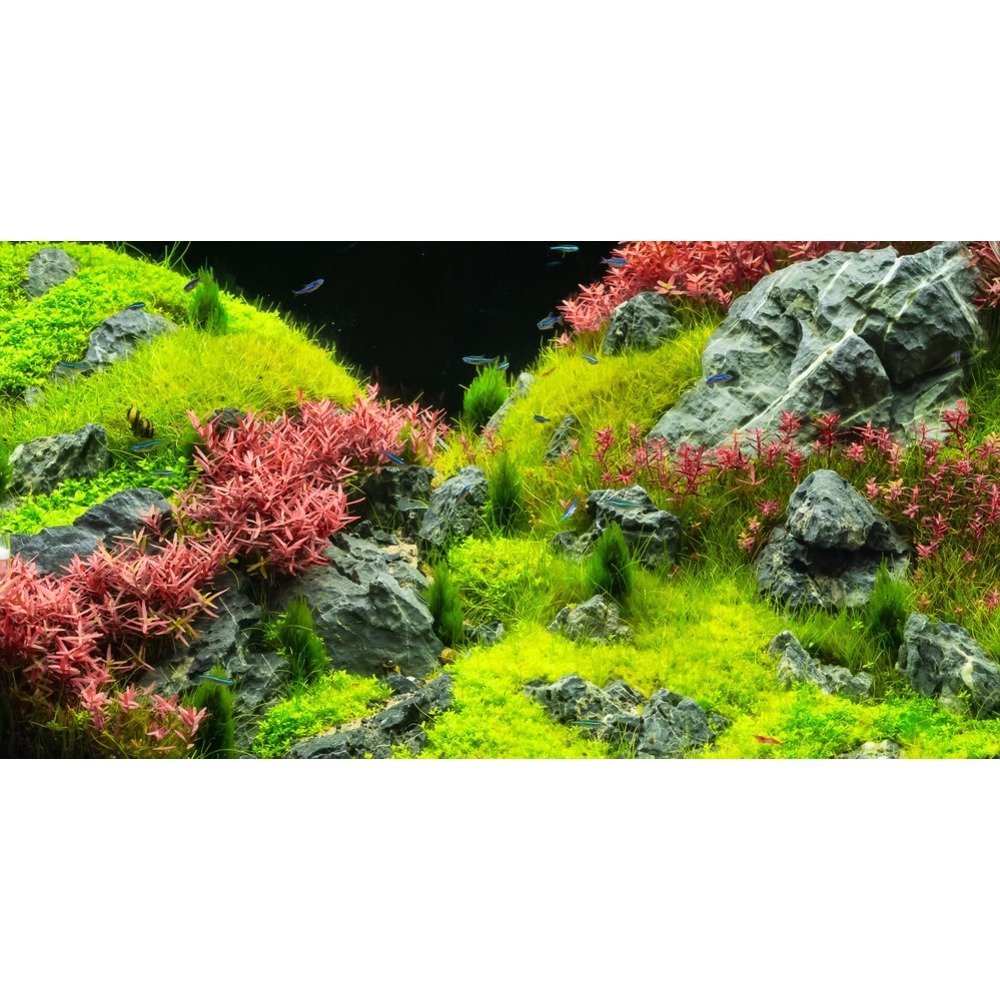 CARPET PLANTS
4
CARPET PLANTS
4
-
 CLEARENCE SALE
1
CLEARENCE SALE
1
-
 DRIFTWOODS
5
DRIFTWOODS
5
-
 EPIPHYTES
5
EPIPHYTES
5
-
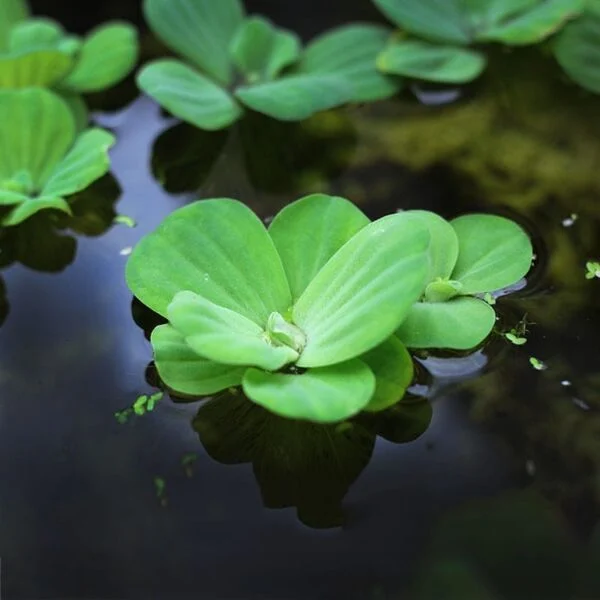 FLOATING PLANTS
1
FLOATING PLANTS
1
-
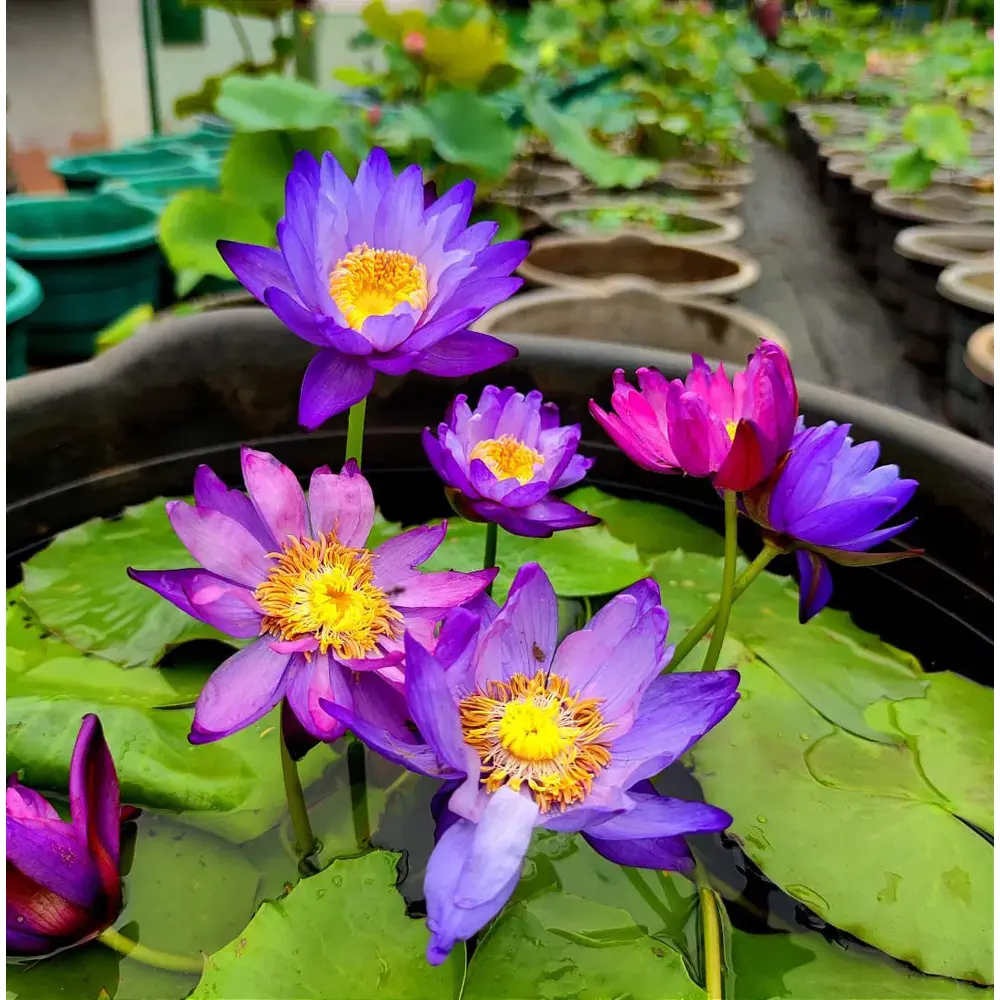 LILY
4
LILY
4
-
 LIVE FISHES
178
LIVE FISHES
178
-
 LIVE PLANTS
54
LIVE PLANTS
54
-
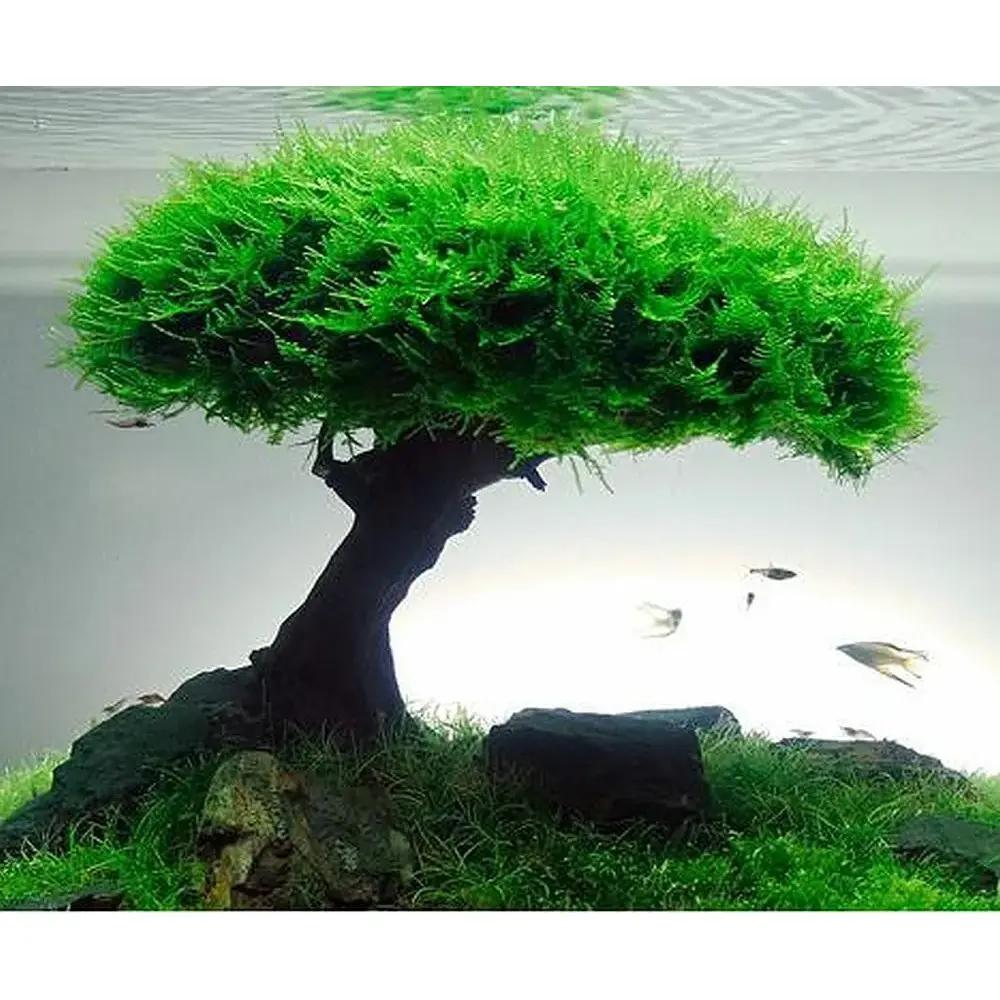 MOSS
6
MOSS
6
-
 PLANTED AQUARIUM
41
PLANTED AQUARIUM
41
-
 POT PLANTS
26
POT PLANTS
26
-
 STARTERS
5
STARTERS
5
-
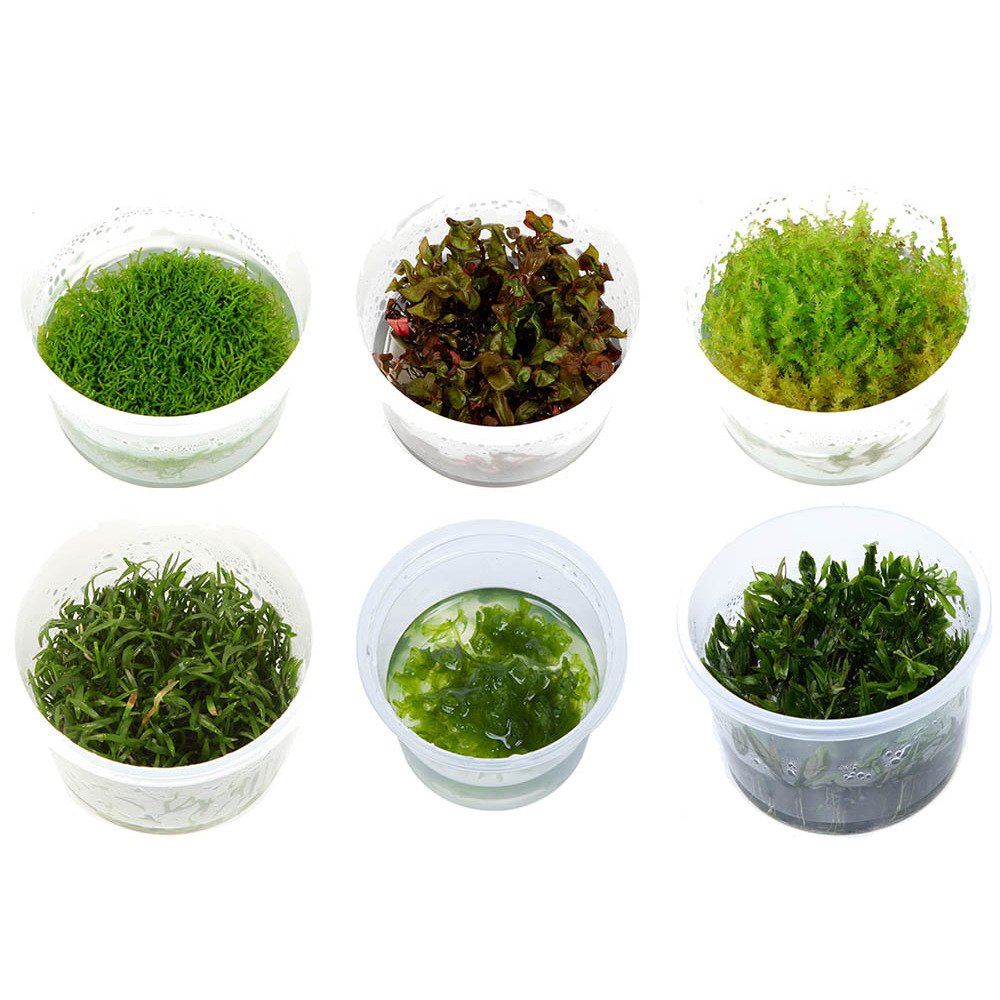 TISSUE CULTURE
11
TISSUE CULTURE
11
-
 TOYS/ DECORS
71
TOYS/ DECORS
71


